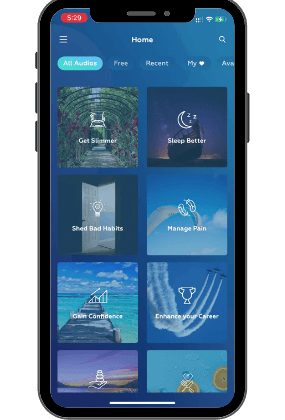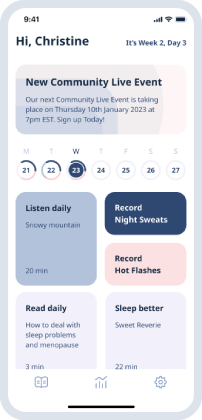
15 Tips to Sleep Better at Night

How Much Sleep Do We Need Each Night?
Table of Contents
Sleep paralysis is a common but often terrifying parasomnia that typically occurs when a person is falling asleep. You might find that you are unable to move shortly after you fall asleep or when you are waking up. The phenomenon is temporary, but it can be quite frightening. It affects more than 30 percent of psychiatric patients at some point in their lives and about 7 percent of the general public.
Although it can happen for no reason, it is frequently associated with narcolepsy.
Causes and Symptoms
Throughout history, people would develop a variety of myths and beliefs to better understand what was happening during these often terrifying experiences, including demons, night hags, and other supernatural creatures. Scientists refer to the phenomenon as pre- and post-dormital paralysis, or the feeling of being paralyzed right before or after you fall asleep or awaken. Typically, these episodes are mild and short-lived. They typically last between a few seconds and a few minutes. Most people will feel unable to move. Some might also experience:
- Intense feelings of fear
- Feel weight or pressure
- Feel a presence or as though someone is in the room or watching them
- Difficulty breathing
- Sweating
- Headaches
- Muscle aches
- Difficulty breathing
- Paranoia
Unlike a nightmare, people who experience pre- or post-dormital paralysis are fully awake and aware of their experiences. However, they are unable to speak or move. They may also be able to recall what they experienced once the sense of movement returns. Hypnagogic and hypnopompic hallucinations are also common during pre- and post-dormital paralysis experiences.
These hallucinations may be visual or auditory and can be confused with nightmares. They are often extremely vivid and realistic and may be frightening or disturbing. As with pre- and post-dormital paralysis, hypnagogic and hypnopompic hallucinations are not medical emergencies and are considered benign.
Treating Sleeping Disorders
Anyone can suffer from disordered sleep, but some people may be more prone to certain parasomnias, such as pre- or post-dormital paralysis. Most who suffer from this phenomenon will have their first episodes in their teens or early 20s. You might be at a higher risk if you suffer from narcolepsy, insomnia, anxiety, depression, bipolar disorder, or post-traumatic stress disorder. Poor sleep hygiene or sleep anxiety can aggravate sleep disorders or increase your risk, too.
If your doctor suspects that you have any difficulty sleeping, they may recommend a sleep study to monitor brain waves and breathing patterns during sleep. They may also suggest that you track your sleep patterns and medical history. However, for most people, there is no need for extensive medical tests to diagnose or determine if you are experiencing this phenomenon.
When an underlying condition, such as narcolepsy, is responsible for temporary paralysis during sleep, treating the underlying problem could resolve the issue. Your doctor might also prescribe certain medications, including selective serotonin reuptake inhibitors, which can help manage symptoms associated with narcolepsy.
For those who do not have an underlying condition causing or contributing to the issue, you can still get relief by addressing symptoms or contributing factors, such as:
- Reducing blue light exposure before bedtime
- Lowering the temperature of your room when you sleep
- Maintaining a relaxing bedtime routine
- Reducing stress
- Exercising regularly earlier in the day
- Maintaining a regular sleep schedule
- Sleeping on your side rather than your back
Some medications can exacerbate symptoms. If you take any over-the-counter or prescription medications, track them and talk to your doctor or pharmacist about potential side effects and interactions that could be causing or contributing to your symptoms.
Some people with pre- or post-dormital paralysis can often benefit from additional therapies, such as yoga, Tai Chi, progressive relaxation, or breathing exercises. These therapies can relax your mind and body before you go to sleep. Hypnosis for relaxation may also be beneficial. With self-hypnosis, you can learn to relax and release the sleep anxiety that is holding you in unhealthy sleeping patterns. As you develop healthier attitudes towards sleep, your sleep quality and quantity will improve, and disordered patterns may decrease. You might even find your day-to-day stress levels also decrease.
Visit UpNow.com to learn more about how to manage your fears and anxiety or to download our app.
UpNow Health only uses high-quality sources, including peer-reviewed articles, to support the facts within our articles. All our articles are reviewed by experts to ensure that our content is accurate, helpful, and trustworthy.
1. References Davis, K. (2017, May 24). Sleep paralysis: Causes, symptoms, and tips. Www.medicalnewstoday.com.
https://www.medicalnewstoday.com/articles/295039
2. Roybal, B. (2008, July 25). Sleep Paralysis. WebMD; WebMD. https://www.webmd.com/sleep-disorders/sleep-paralysisSharpless,
3. B. A., & Barber, J. P. (2011). Lifetime prevalence rates of sleep paralysis: A systematic review. Sleep Medicine Reviews, 15(5), 311–315. https://doi.org/10.1016/j.smrv.2011.01.007
4. Sleep Paralysis: What Is It, Causes, Symptoms and Prevention. (n.d.). Cleveland Clinic. Retrieved January 12, 2022, from https://my.clevelandclinic.org/health/diseases/21974-sleep-paralysis











